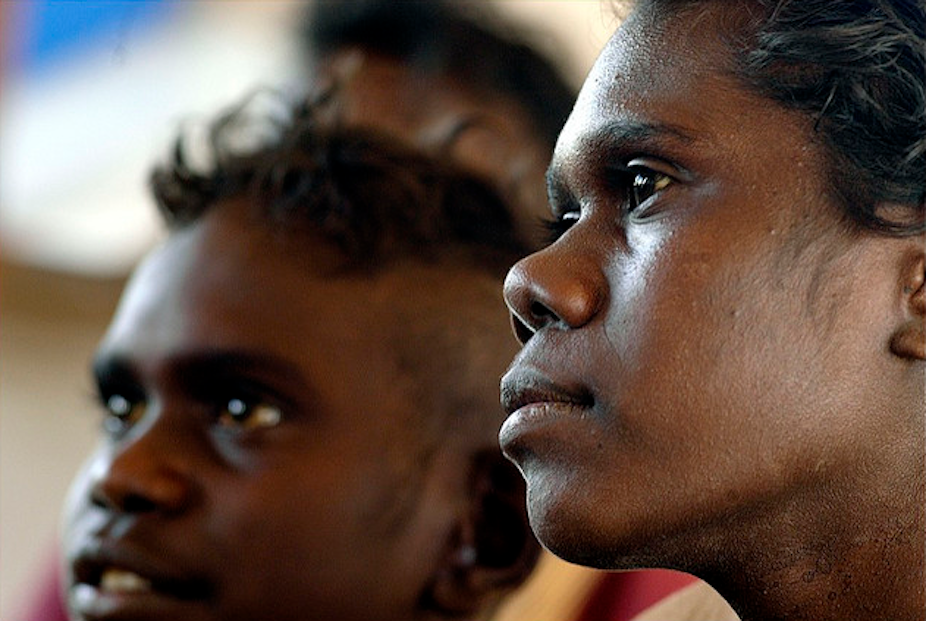The government has made clear that more opportunities for Indigenous students are key to its vision for a world-class higher education system. However, Indigenous issues have received little attention in the policy debate over recent months, including in the higher education bill.
In the decade from 2003, Indigenous higher education enrolments across Australia grew by 52%. We need to build on this success.
There are two broad challenges for Indigenous higher education. With these in mind the government’s reform proposals present both risks and opportunities.
Challenge one: participation
The first challenge is achieving equity in participation. Despite growing Indigenous enrolments, the proportion of Indigenous students in the system has remained unchanged. We need need to push harder for a greater share of educational opportunity in order to fully realise the economic and social potential of higher education.

Programs are needed to build the pipeline from schools to university. This requires a rethink of Indigenous schools education strategy. It is too narrowly focused on retention to year 12.
We need a stronger focus on building the aspiration of Indigenous secondary school students for university. Even more importantly we need educational interventions that ensure the best Indigenous students are fully equipped for tertiary study. This requires educational strategies that focus on attainment.
Challenge two: completions and quality outcomes
Indigenous equity is a desirable goal for higher education. However, a focus just on getting them to uni is not sufficient. We need to improve Indigenous completion rates and the quality of educational outcomes.
Quality outcomes are key if Indigenous graduates are to be competitive for the best jobs. Higher education contributes much more to personal and social development than a job. However, employment in the graduate labour market is an important endpoint.
Indigenous tertiary student completion rates are significantly poorer relative to their non-Indigenous peers - although this varies between universities. A significant proportion eventually make it to the end of their degree, but too many do not. The social harms of exiting higher education without completion are significant.
Academic support services for Indigenous students in higher education need to focus on the timely identification of students at risk. They also need to support all students to realise their full potential.
The risks - participation and choice
The obvious risk is that higher fees may slow the growth of Indigenous enrolments. Higher education policy experts have observed that the cost of degrees has not in the past affected the demand for places by non-Indigenous students. However, government proposals will have a significant impact on how student debt grows over time. We should not assume that there is not a future tipping point for Indigenous students.
In my experience prospective Indigenous students worry more about the immediate issues such as accommodation or living expenses. Just now, future debt does not appear to be a pressing concern. Yet, if fees are uncapped as proposed, it is imperative that trends are monitored.
Faced with larger debts, prospective students may need to exercise more caution in their choice of degree. The issue lies more in that Indigenous students lack the social networks that assist their advantaged peers in making decisions about life after school. Resources are required to support Indigenous students to choose well.
The opportunities - scholarships and pathway programs
The 2014 budget measure that links a portion of fee increases to scholarships for disadvantaged students is welcome, as is the retention of the Higher Education Participation Program - which provides funding to universities for equity programs. If these measures are to be effective, universities will need to develop local programs appropriate to the needs of their Indigenous student cohort. These programs should focus on ensuring students complete with the best possible academic outcomes.
The proposal to uncap sub-bachelor places for programs such as diploma and associated degrees also creates pathways for Indigenous students. While the numbers of students who finish year 12 is growing, many still lack the tertiary preparation needed for direct entry into bachelor degrees. We need to be certain that pathway programs are well designed and evaluated.
There are still many uncertainties about the future of the Australian higher education landscape. If the reforms proceed as planned, we need to monitor Indigenous outcomes and resource students at all points to make the best educational choices. The opportunities presented in the reform agenda need to be aligned with the broader Indigenous education agenda and in focus on optimising their educational outcomes.

